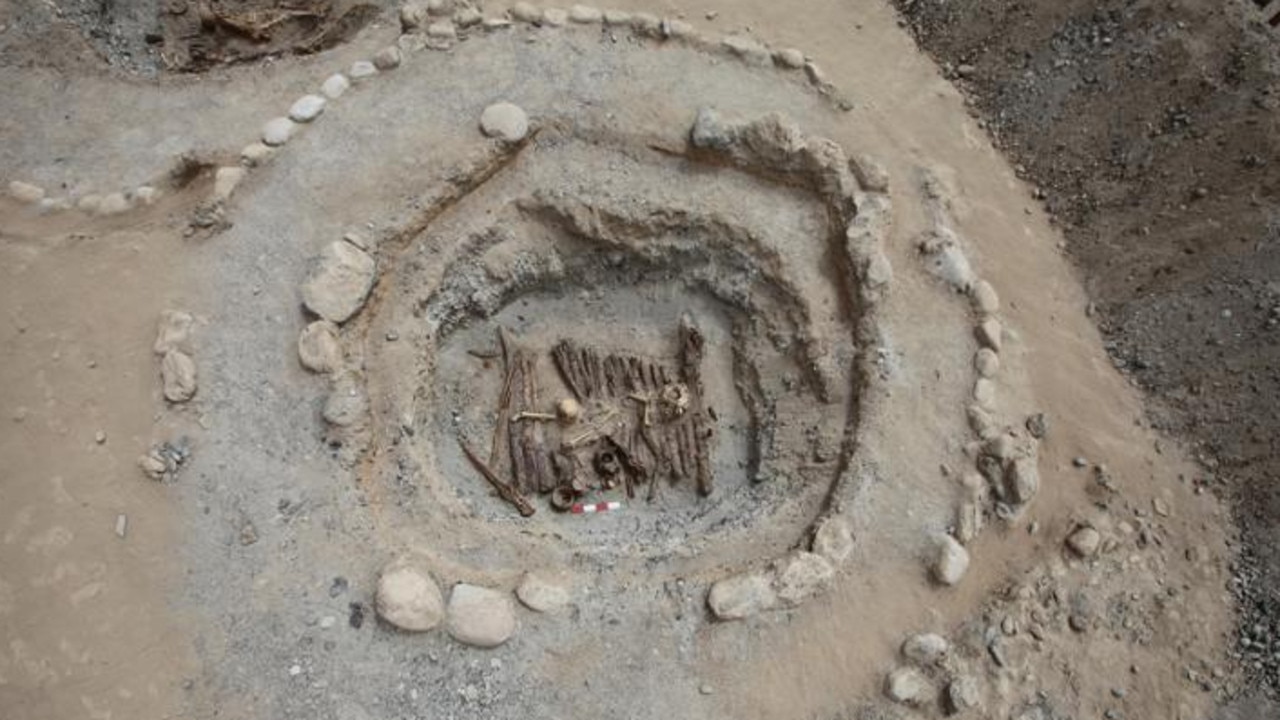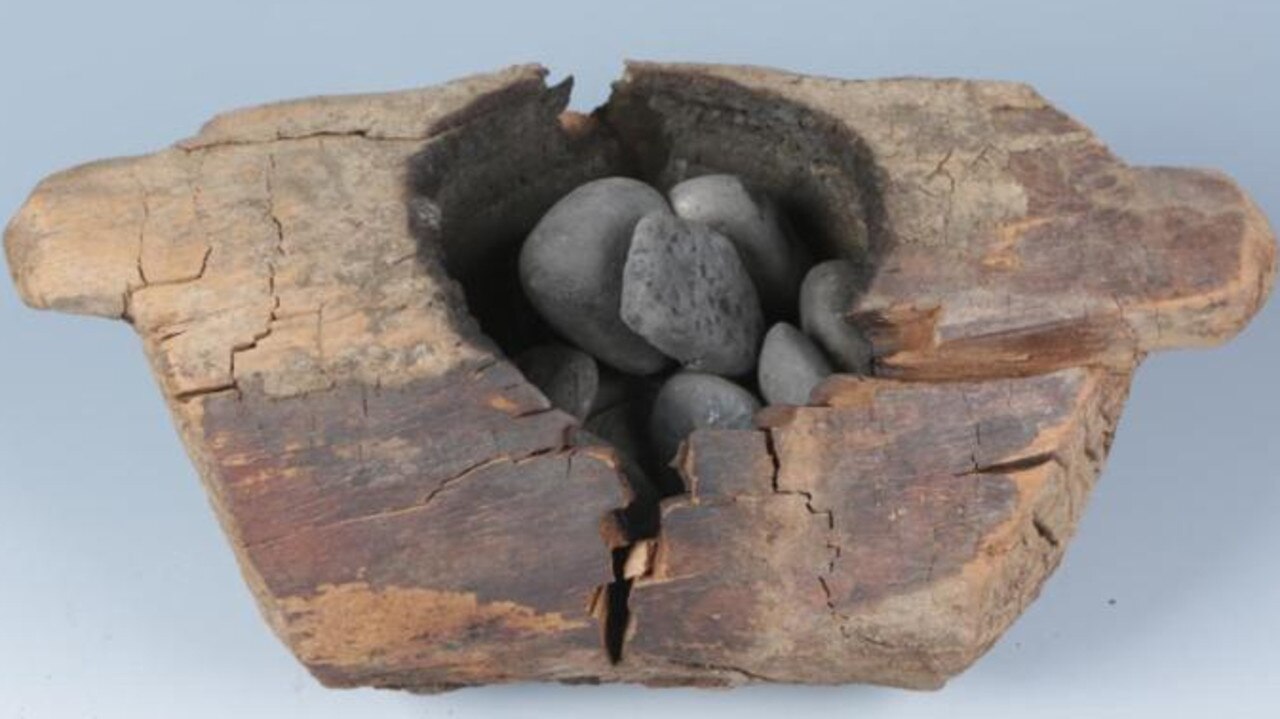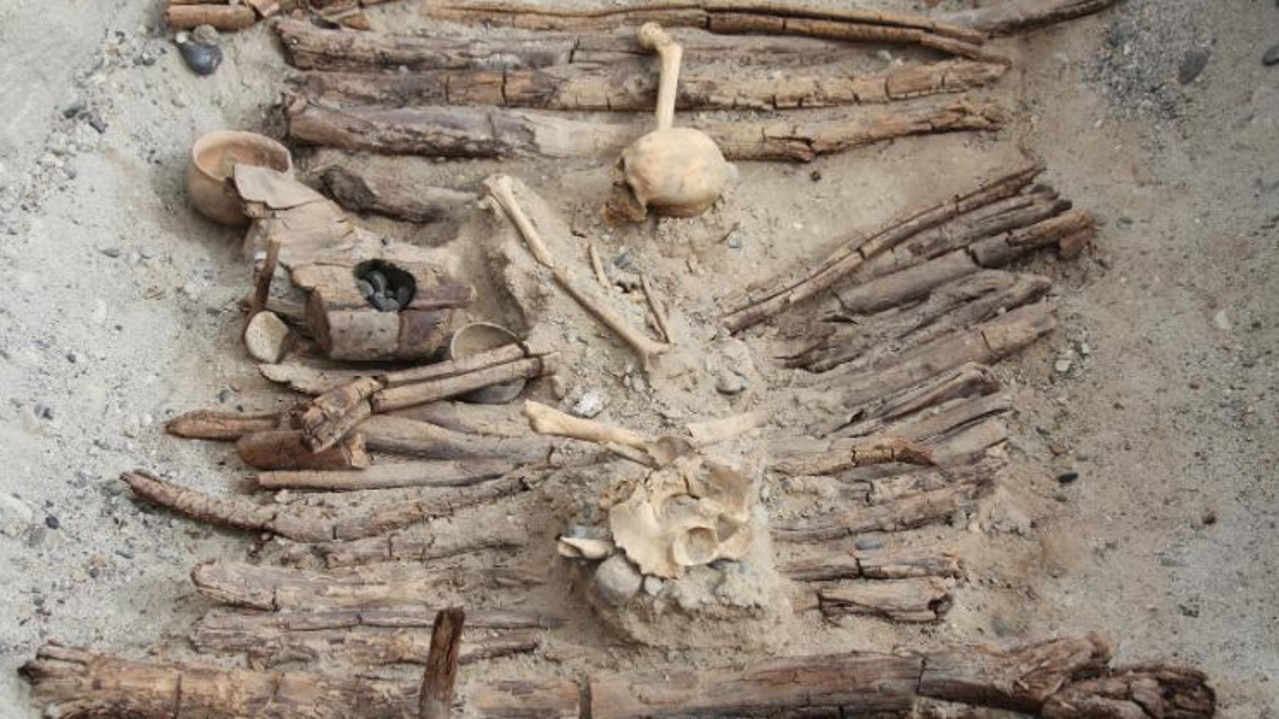Mysterious Chinese tomb reveals pot-smoking trend
In the depths of the Himalayas, a 2500-year-old tomb has been discovered, revealing evidence humans have been smoking weed for a long time.
Deep in the Himalayan mountain ranges, in a 2500 year old tomb buried in western China, scientists have made a discovery that proves humans have been getting high for far longer than first thought.
Until now, there has been little historical or archaeological evidence showing when humans began to use the cannabis plant as a drug.
But scientists from China and Germany who discovered this tomb say some of the contents found within its wooden bowels contained small stones that had been exposed to high heat. The archaeologists said the braziers were clearly used to burn incense and other plant matter.

The researchers said in a paper, published in the journal Science Advances, the hidden site on the Pamir Plateau had a high amount of tetrahydrocannabinol (THC), the most potent psychoactive agent in the cannabis plant.
According to CNN, cannabis was probably used during burial ceremonies, perhaps as a way to communicate with the divine or the dead but not smoked in the same way it is today.
Nicole Boivin, an author on the paper, said the cannabis would’ve been burnt like incense in a small room.

“This is the only way that cannabis could have been smoked prior to the arrival of pipe technology, which is not until much later, it seems,” she said in the paper.
“This study provides the earliest unambiguous evidence for both elevated chemical production in the plant and also for the burning of the plant as a drug,” Robert Spengler, another author of the study, told Newsweek.
The discovery has also unlocked the mystery around how cannabis was used by humans hundreds of thousands of years ago. It is understood the plants were used in East Asia for their oily seeds and fibre from at least 4000BC, according to CNN.

Home to eight of the world’s 10 tallest mountains, the Himalayas are a popular destination for tourists, especially those interested in mountaineering.
According to Business Destinations, the mountain range holds deep religious significance for the Hindu faith, as it is considered the home of the deity Shiva, and so for centuries, Hindus would undertake the Himalayan pilgrimage to visit the many shrines, temples and sanctuaries located on the peaks.
In recent years, tourism has substantially increased in the Himalayan region, mostly in higher mountain folds. According to KN Vajpai, an environmental specialist at Climate Himalaya, tourism has increased by between 50 and 60 per cent since the 1990s.

The authors of the study say the discovery is rare and casts new light on our longstanding relationship with cannabis throughout history.
“Finding evidence for ancient drug use is a bit like finding a needle in a haystack because this kind of evidence is rare due to there being few opportunities for long-term preservation of the remains of activities involving drug use, which is very ephemeral and doesn’t necessarily leave a lot in the way of physical evidence,” Ms Boivin said. “Furthermore, due to issues of preservation, finding such a nice, clear signal is pretty unusual.”




